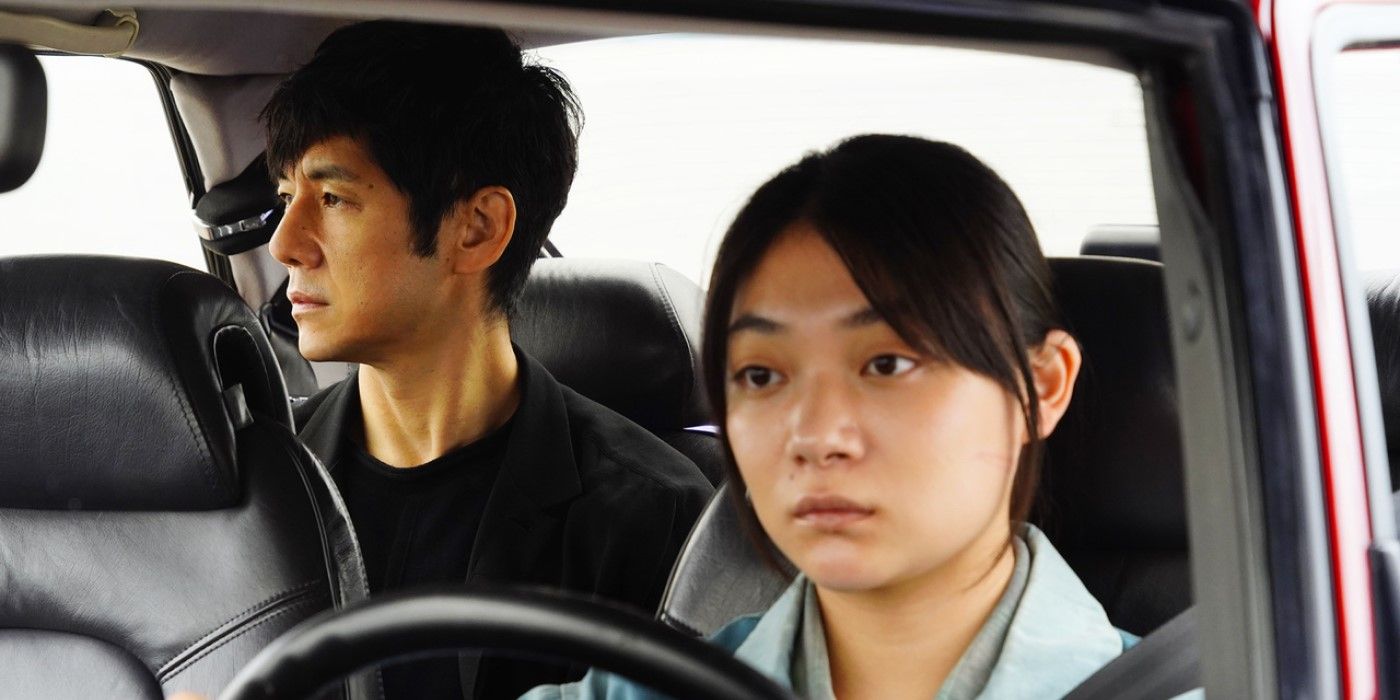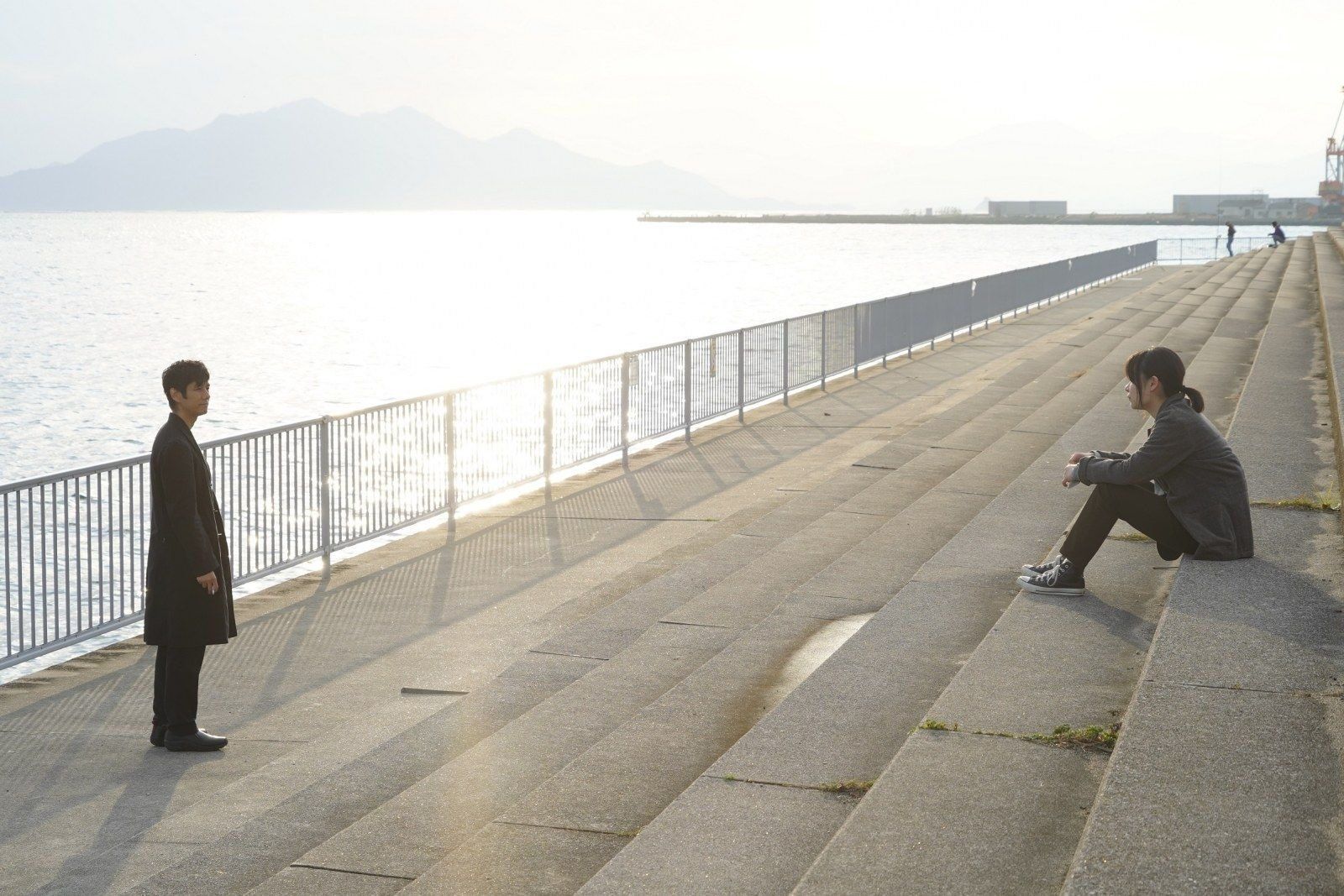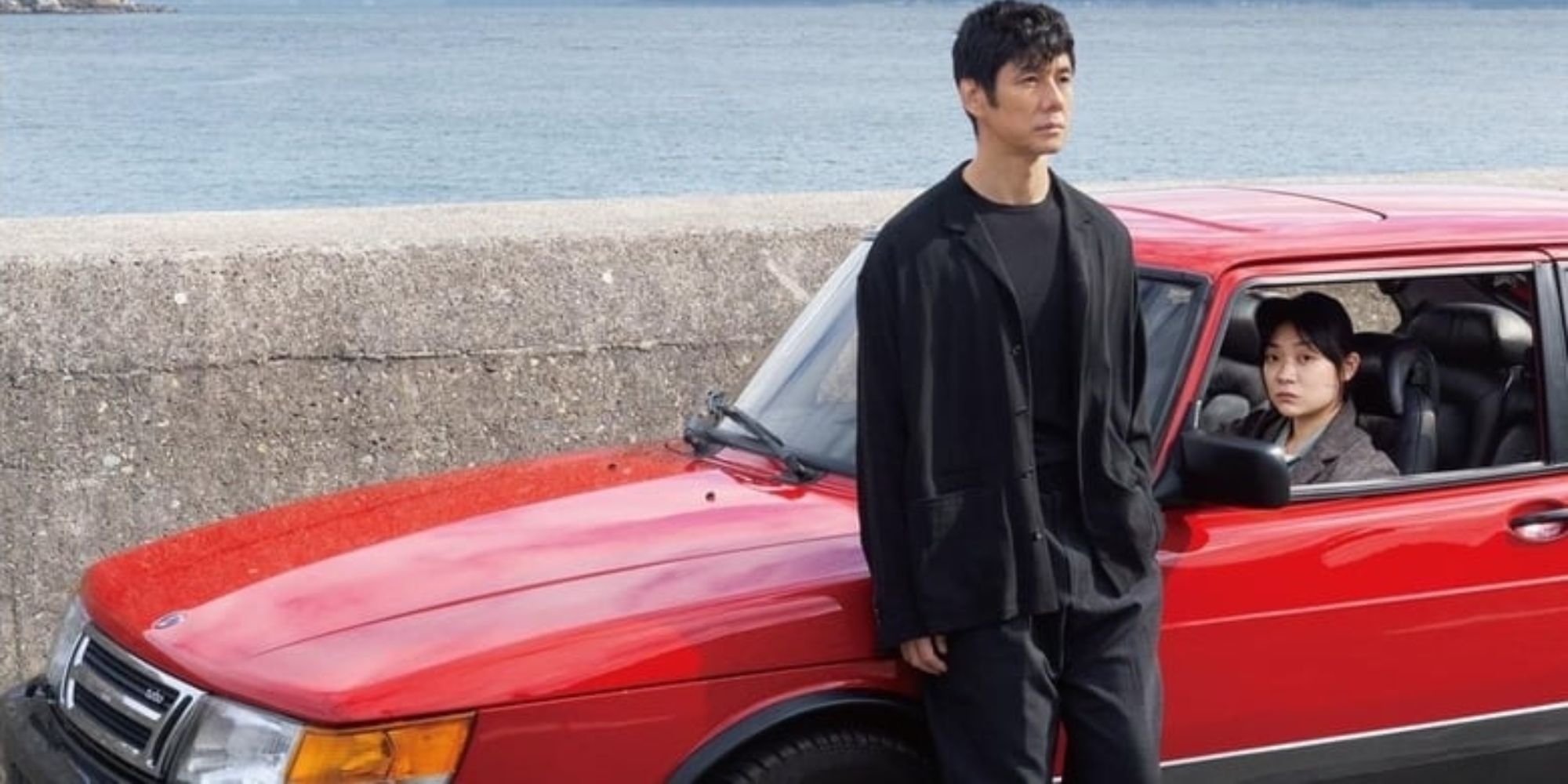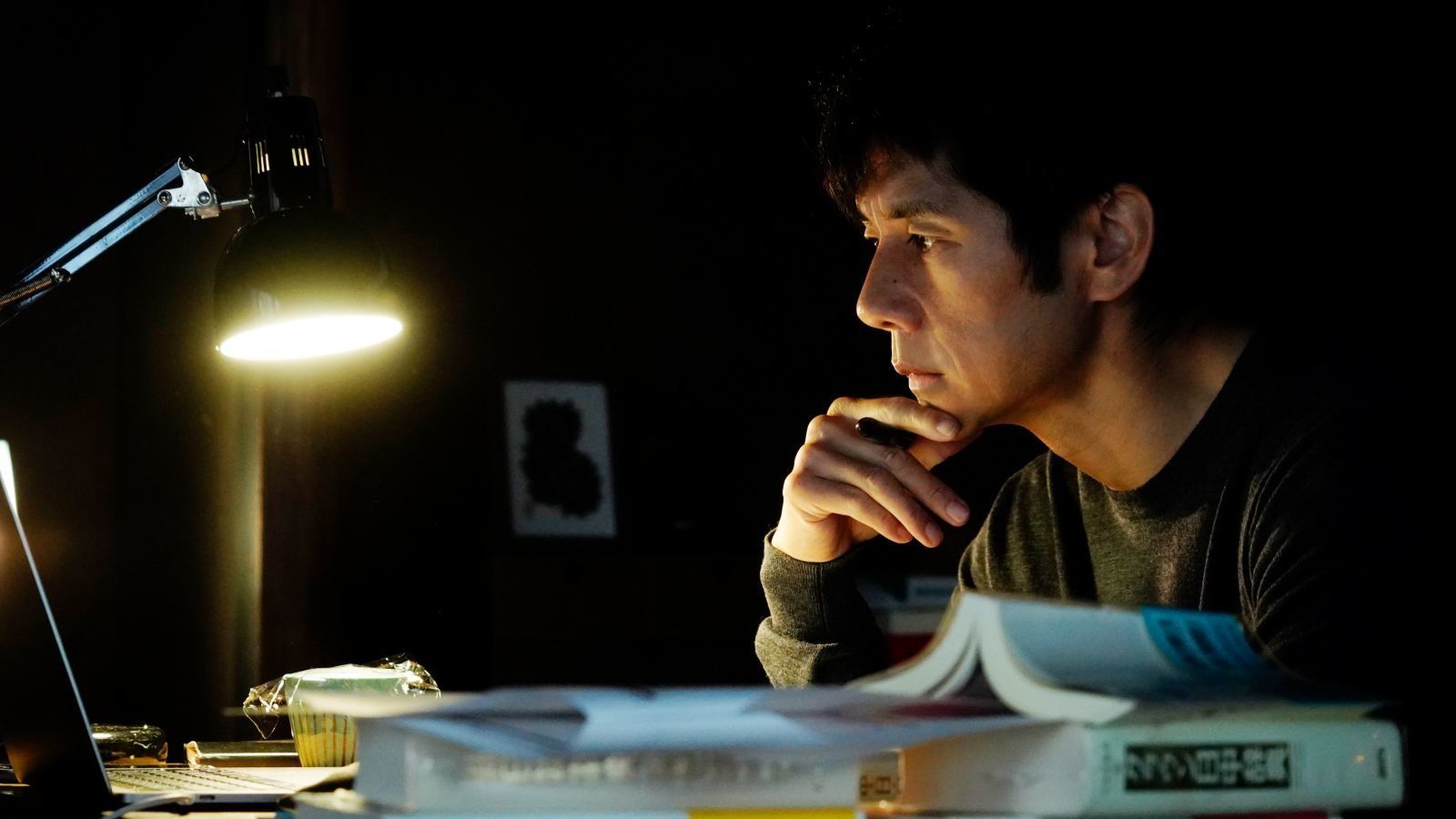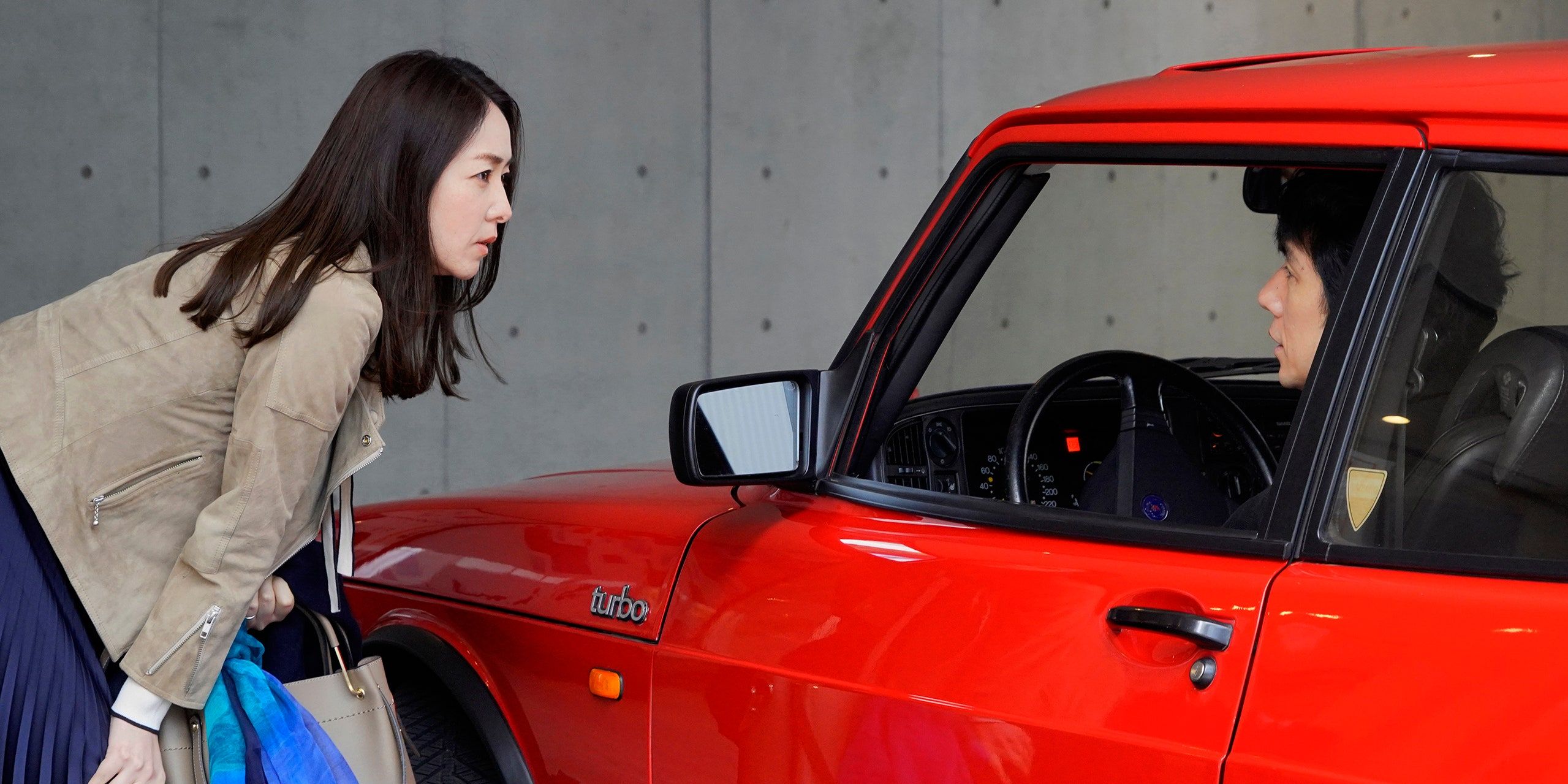Film critic Roger Ebert once remarked that it's a bad idea to reference a beloved movie in your film since it can only serve to remind people of superior features they could be watching instead. The same can be said for tremendous works from other mediums of artistic expression. A tedious film flashing a vivid painting on-screen, for example, could inspire one to vacate the auditorium and check out a museum instead. The new Ryusuke Hamaguchi movie Drive My Car, though, is the perfect example of how to interweave classic works of art into your film (in this case, vintage plays) and not only not distract from your story but enhance it.
The story Hamaguchi is telling here concerns theater director Yūsuke Kafuku (Hidetoshi Nishijima), whose life is thrown into disarray when he comes home one day to discover that his wife has suddenly passed away from a cerebral hemorrhage. Flash-forward two years later and Kafuku, who now wanders the Earth with a stifled disposition, has been hired to direct a production of the Anton Chekhov play Uncle Vanya in Hiroshima. This task comes with a required chauffeur, Misaki Watari (Tōko Miura), another quiet soul who’s also got trauma of the past molding her present.
Even before Kafuku and Watari cross paths, Drive My Car establishes its ingenious use of previously existing material in an early scene depicting the concluding moments of Waiting for Godot by Samuel Beckett. Beyond establishing the job Kafuku is immersed in, this play’s central themes make for a great parallel to the plot of Drive My Car. Godot is all about two men waiting for something that’ll never come. Their lives have been put on pause for a figure named Godot, a reflection of how much our existences are molded by others even when they’re not physically present.
Similarly, Kafuku and Watari are both individuals who’ve become trapped by the horrors of the past and especially the complex emotions they feel towards those they’ve lost. The people who shape their lives are no longer on this Earth, yet their individual presences are profoundly felt. Much like Waiting for Godot protagonists Vladimir and Estragon, their lives are trapped in a state of stasis. To boot, using Godot as a mirror towards the plight of Kafuku and Watari establishes the way Drive My Car will be using classic art. Hamaguchi will not be dredging up works of the past for cheap fan service, but rather as ways of conveying emotions that the Drive My Car characters struggle to communicate themselves.
This is made apparent once auditions for Uncle Vanya get underway and the actors have prepared dialogue from the play that vividly captures feelings Kafuku can’t get out of his own mouth. An audition between prospective male and female performers consists of an argument between lovers that reflects the sort of off-the-cuff feelings of rage Kafuku internalized when he caught his wife cheating on him shortly before her death. Later on, the rehearsal process involves a performer talking about how “my existence is devoid of happiness”, an appropriately overt encapsulation of how many emotions rooted in the past cloud Kafuku’s present-day disposition.
Meanwhile, discussions between characters about Uncle Vanya further reinforce how Drive My Car is employing a familiar piece of art to get to know specifically defined individuals better. Most notably, discussions ensue between the characters about the unique power of Chekhov’s writing. Supporting figure Lee Yoon-a (Yoo Rim Park) informs Kafuku during a dinner that she finds Chekhov’s script for Uncle Vanya so deeply stirring that it’s helped provide her some clarity in the wake of several personal tragedies. By contrast, in a moment of vulnerability, Kafuku confides in one of his actors that he couldn’t possibly portray the titular lead of Uncle Vanya again since performing in this play reveals “your true self”.
Like with most of the people around him, Kafuku keeps that “true self” and all the complex emotions bottled up within at a distance. Drive My Car is cognizant that great art of the past doesn’t just exist to be regurgitated for cheap nostalgia pops. Instead, it can also lead to us exploring new truths about ourselves and even getting to know others better. The latter quality is exemplified by how Kafuku initially treats both his cast and this version of Uncle Vanya strictly, even going as far as to tell one inquisitive actor that she does not need to know his intent for his play. She just needs to mechanically read the lines on the page.
That’s not how good art functions, though, and Kafuku’s newest approach to Uncle Vanya soars only when he and the actors become unafraid to become emotionally vulnerable with one another. In this sense, the use of Uncle Vanya is a springboard toward a depiction of how unity can provide some semblance of comfort in the wake of tragedy. The increasingly close relationship Kafuku and the actors have with Uncle Vanya also mirrors how Kafuku and Watari begin to chip away at the shells they’ve put around themselves, revealing the trauma and deeply complicated feelings within.
The thoughtful use of Uncle Vanya even extends to how Chekhov’s approach to the world is mirrored in the screenwriting by Hamaguchi and Takamasa Oe (who are adapting a short story of the same name penned by Haruki Murakami). Chekhov’s works were famously ambiguous productions that tackled heavy subjects but staunchly refused to offer either tidy resolutions or morals to the audience members of his plays. Life does not offer these revelations that cure universal ails, so Chekhov’s works would not deliver those as well.
That’s an approach carried over by Drive My Car, which consistently refuses to tie a pretty bow onto all the hardships its primary characters have experienced. Kafuku and Watari don’t conquer their trauma so much as they confront its presence while making baby steps towards an existence that isn’t solely defined by it. We even see Kafuku, in one of the film’s final scenes, gripped by the same debilitating anxiety that sabotaged his Uncle Vanya performance at the start of the film, complete with him leaning on a table just off-stage while breathing heavily.
Meanwhile, Chekhov’s tendency in his writing to have characters convey important information through restrained means, including outright silence, is also mirrored here. The subdued style of Drive My Car even extends to when characters are not on-stage reciting lines that this Russian playwright wrote. Hamaguchi and Oe always keep in mind that less is more even in big pivotal scenes like Watari returning to a place of extreme trauma from years prior. In these critical moments, the confident silence that envelopes the screen shows that these filmmakers are taking more than just surface-level details from Chekhov’s work.
As Chekhov realized long ago, you can’t get rid of heavy instances of emotional turmoil. There is only living with such arduous parts of our psyche. But works of art like the plays of Chekhov or Drive My Car do allow viewers to explore such turmoil in a detailed and rich fashion. In leaning on a work of the past like Uncle Vanya, Drive My Car excels on countless levels, including in finding a way to capture the interior voices of characters who refuse to overtly communicate.
By referencing a classic of the past so heavily, Drive My Car manages to craft characters, themes, and explorations of grief so powerful that it becomes a classic of the present. No doubt future works of art will be leaning on Drive My Car much like this movie leans on Uncle Vanya.

